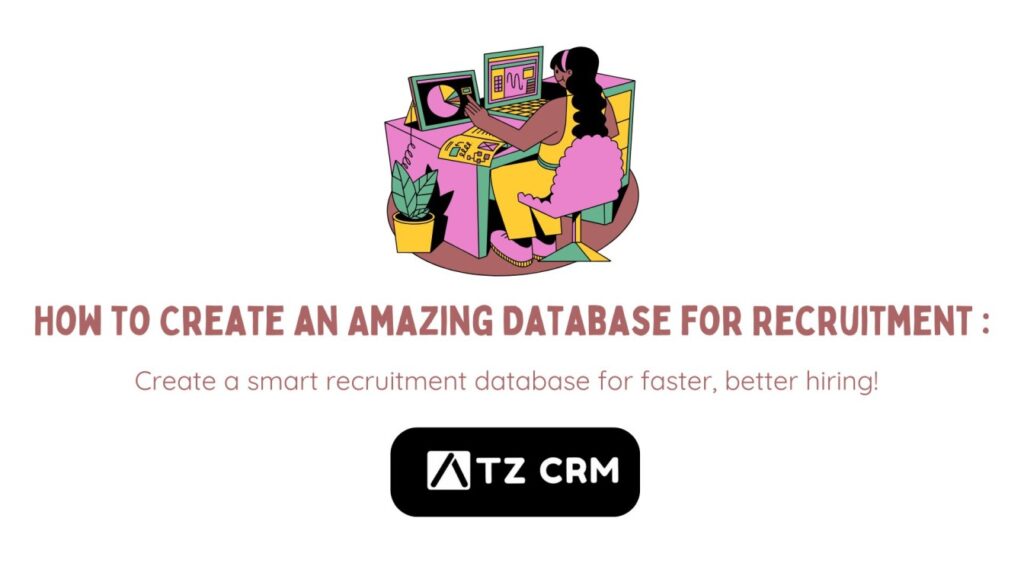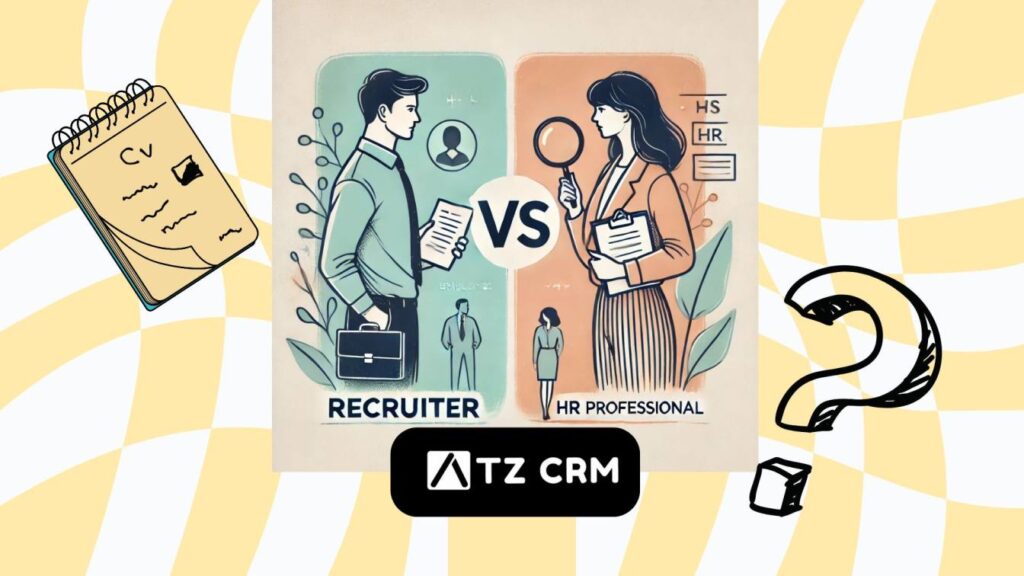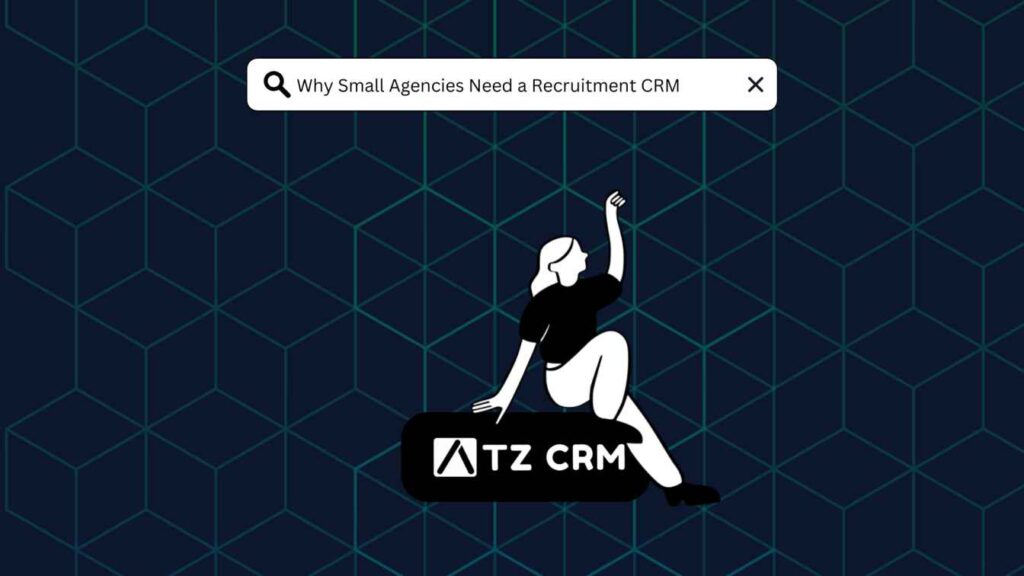Introduction :
Finding the right employees can be challenging, especially if you don’t have a proper system to manage candidate information. A recruitment database helps organize, store, and track all candidate details in one place, making hiring easier and faster.
A well-structured recruitment database allows businesses to hire efficiently, improve communication, and ensure they don’t miss out on top talent. If you often struggle with managing resumes, applications, or interview notes, setting up a recruitment database can make a big difference.
In this guide, you’ll learn how to create a recruitment database that will streamline your hiring process and help you make better hiring decisions.
Why Do You Need a Recruitment Database?
Before we discuss the steps to build one, let’s look at why having a recruitment database is essential:
- All Candidate Data in One Place: No need to search through emails or spreadsheets to find resumes.
- Faster Hiring: Easily access and contact candidates without delay.
- Better Candidate Experience: Quick responses make candidates feel valued.
- Data-Driven Decisions: Track hiring trends to improve recruitment strategies.
A recruitment database also ensures you have a steady pool of potential candidates for future job openings, making the hiring process smoother and more efficient.
Related Read: The Ultimate Recruit CRM Showdown: Best ATS Ranked
Step 1: Define Your Goals
Before setting up a recruitment database, ask yourself:
- What is my main goal? Faster hiring, better candidate management, or reducing hiring costs?
- How many candidates do I usually manage? This will help in choosing the right tool.
- What roles do I frequently hire for? Categorizing candidates will be easier when you know the job types.
If your company hires frequently, you might need an advanced system to handle large amounts of data efficiently.
Step 2: Choose the Right Recruitment Software
The next step is selecting the best tool for your database. Some common types of software include:
- Applicant Tracking Systems (ATS): Helps store and organize candidate details.
- Customer Relationship Management (CRM): Useful for long-term engagement with potential hires.
- HR Management Software: Handles hiring and other HR-related tasks.
Features to Look For:
- Automatic resume sorting
Candidate tracking
Reports and analytics
- Integration with job portals
Make sure the software can integrate with your company’s existing HR tools for a seamless process. A reliable option like [atz crm] can simplify recruitment management and save time.
Related Read: 8 Tips for Choosing the Best Applicant Tracking System
Step 3: Organize Your Database Properly
After choosing your software, it’s time to structure your database. Without a proper system, information can become disorganized.
How to Structure It:
- Sort Candidates by Skills: Group candidates based on their abilities.
- Filter by Experience Level: Maintain separate lists for freshers and experienced professionals.
- Track Candidate Sources: Note where they applied from (LinkedIn, job portals, referrals, etc.).
Tagging candidates by job roles can also make it easier to match them with future openings.
Essential Candidate Information:
- Name, contact details, and location
- Resume/CV
- Skills and work experience
- Interview feedback
- Current hiring status (shortlisted, rejected, or hired)
It’s also useful to add a notes section for personal feedback, helping your team recall important details.
Related Read: Top Benefits of Using an ATS for Recruitment
Step 4: Keep Your Database Updated
A recruitment database is only effective if the information is up-to-date. Outdated data can slow down the hiring process.
Tips to Keep It Updated:
- Regularly Review Data: Check if candidates have changed jobs or contact numbers.
- Archive Inactive Candidates: Move unresponsive candidates to an archive list.
- Track Communication History: Update the database after every email, call, or interview.
Setting up quarterly or bi-annual reviews will ensure your database remains current and relevant.
Related Read: Data Hygiene Best Practices: Revolutionizing Recruitment
Step 5: Automate Data Entry and Communication
Manually entering candidate details can be time-consuming and lead to errors. Automating the process can save time and ensure accuracy.
Ways to Automate:
- Resume Parsing: Automatically extracts information from resumes.
- Email Integration: Connects your email to the database for quick communication tracking.
- Interview Scheduling: Syncs with calendars to schedule interviews efficiently.
You can also set up automated follow-up emails for candidates who haven’t responded, reducing manual work.
Step 6: Analyze and Improve Your Hiring Process
Your recruitment database holds valuable information that can help you fine-tune your hiring strategy and make smarter decisions. By tracking key hiring metrics, you can identify what’s working well and what needs improvement.
Important Metrics to Track:
- Time-to-Hire: How long does it take to fill a job position? A shorter hiring time means a more efficient process.
- Cost-per-Hire: The total amount spent on recruiting a new employee, including job ads, interviews, and onboarding.
- Candidate Source Performance: Which job platforms or hiring sources bring in the best candidates? Knowing this helps you focus on the most effective channels.
- Response Time: How quickly do candidates reply to job offers? A faster response could indicate strong interest, while delays might signal a need for better communication.
By keeping an eye on these key factors, you can make better hiring choices, speed up the process, and ensure you’re bringing in top talent efficiently.
Related Read: Discover 10 Free Most Powerful ATS for Small Businesses
Conclusion :
Creating an efficient recruitment database doesn’t have to be complicated. By using the right tools, organizing information properly, and keeping data updated, you can build a system that speeds up hiring and improves recruitment quality.
Consistency is key—regularly update your database and analyze hiring trends to refine your process over time.
If you want to simplify your recruitment further, consider using ATZ CRM. It’s designed to help businesses build and manage their recruitment database effortlessly.
Start building your recruitment database today and see the difference it makes in your hiring process!
Experience the full power of ATZ CRM with a free trial – no credit card needed!
Test all our features before making a commitment. Ready to see our ATS + CRM in action?


